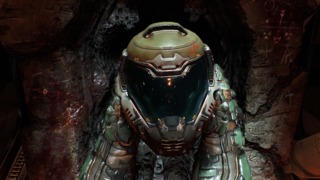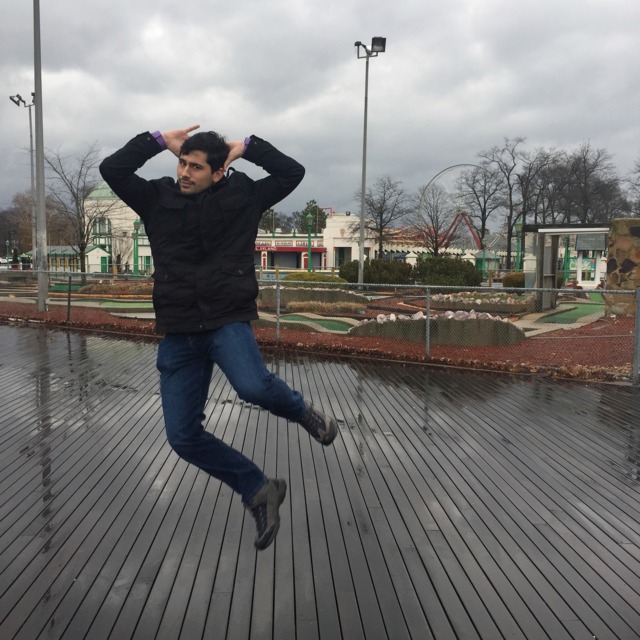
Gino Grieco is a freelance writer, computer programmer, and Giant Bomb moderator. He's the guy who writes all of those Final Fantasy and Magic the Gathering blogs. He co-hosts the "Deep Listens" podcast which can be found here. You can find him on Twitch, Youtube, Twitter, and some site called Giant Bomb dot com as @thatpinguino.
This year has been pretty crazy for me on a personal level, so I’ve had a bit of a hard time keeping up with new releases. On the upside, I got married this year and I now freelance for my favorite gaming site. Those are some pretty dope personal changes and they definitely usurped some gaming time. On the downside, I lost a lot of people I love this year, and in the wake of such loss I could hardly touch a controller. Luckily, my podcast kept me motivated to at least play something every week, and this year was especially rich with games I wanted to discuss with others. So, much to my surprise, I actually played ten new games this year! That’s the perfect number for a list! While I’m sure this list would look very different if I had more time for gaming, I’m pretty happy with the spread I actually did play. Without further preamble, here are my Top Ten Games of 2016:
10. Final Fantasy: Crystal Chronicles
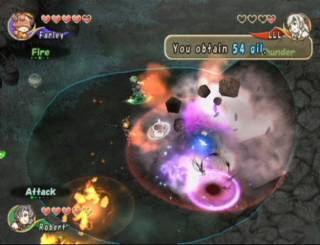
This spot was originally taken by Furi, a game that actually came out in 2016. Then I realized that Furi was only on my list because it came out in 2016. I actively dislike almost everything about Furi. I know that super-difficult, twitch-action games have their fans, but I’m not one of them. So rather than include a game in my top 10 that I have nothing nice to say about, I decided to highlight a cool experience I got to have with an old game I rediscovered this year.
For this year’s Community Endurance Run I finally got to play FF: Crystal Chronicles the way the Lord intended: in four player co-op. I somehow have a group of friends with enough GBAs and GBA-GameCube link cables to play that game in four-player co-op and, let me tell you, it was glorious. We speed ran most of the game until we were stonewalled by the final boss. We ultimately gave up after a half hour of dying repeatedly at 1 AM, but for those few hours when everything was working, it was perfect.
9. Devil Daggers
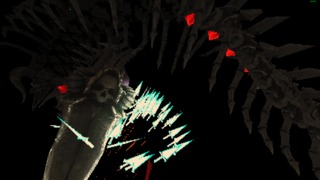
I enjoyed the few hours I played of Devil Daggers. Tight controls, repeatable content, and quick respawn times are a winning combination in just about every genre, and Devil Daggers did a pretty great job bringing that recipe to a first person shooter. Figuring out all of the different enemy types and how to approach them was a fun puzzle while it lasted.
8. Jotun
Jotun technically came out in 2015, but it hit consoles this year and that’s close enough for me. On the God of War-to-Never Alone scale of cultural authenticity, Jotun is pretty far towards the Never Alone side of things despite the fact that you murder your way through Norse Mythology (coming soon to a God of War near you!).
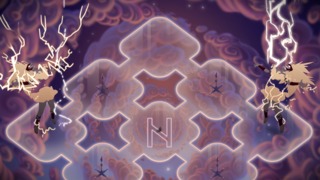
The real draw to me with Jotun was its fluid 2D animation and its gorgeous character and environment designs. Each of the bosses is a real treat and it's super cool to see “tiny person fights giant monster” in a 2D, hand-drawn style after playing several 3D takes on that conceit. I also really enjoyed the handful of times that levels pulled back to reveal the huge scope of the 2D worlds you’re exploring. Sliding down the roots of Yggdrasil with the giant worm Niddhog in the background helped cement that each of the levels, while fairly conventional in terms of game design, had a larger cultural and narrative context.
7. Firewatch
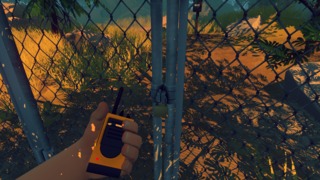
I wanted to love Firewatch. I really did. I love me some narrative-driven gameplay. I love Olly Moss’ artistic style. I love the woods. I even love walkie-talkies. In the end, I loved half of Firewatch. When Firewatch was a romantic comedy about two lonely fire-watchers making small talk, I was in. I can apparently listen to middle-aged flirting for hours. However, once the game switched genres midway through, I was out. I don’t want to say more since my larger issues with the game are firmly in spoiler territory, but sufficed to say I didn’t end up enjoying Firewatch as much as I’d hoped. Yet even with those issues, the game’s strong moments still stuck with me enough to make this list.
6. Overwatch
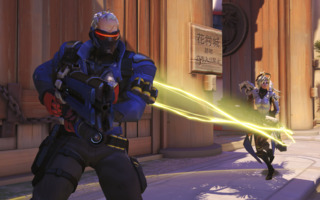
I generally do not like competitive first person shooters. I grew up with Halo 2 online multiplayer and as soon as my friends stopped playing FPSs regularly, I fell off hard. I just don’t like the genre enough on to play an FPS for dozens of hours without a strong story, and I get my competitive fixes from other outlets. It’s with those hang-ups in mind that I’m happy to say I really enjoyed what I played of Overwatch.
Overwatch does a great job of giving you ways to contribute that don’t necessarily involve shooting dudes in the head a whole lot. I’m the type of player who routinely enjoys playing support characters or characters who are a little bit odd. I played Ogre Magi in DOTA. I played Hakan in Street Fighter IV. I’ve played Mass Effect as just about every character archetype other than Soldier. Quirk is my jam and Overwatch has a ton of it. I quickly found my trifecta of lovable roleplayers in D.Va, Symmetra, and Lucio. Between those three I was able to contribute in just about any situation without being a master of dome shots. What ended up pushing me out of Overwatch was the repetitiveness of the handful of maps that existed when I was playing. At a certain point I just sort of knew what I wanted to do on every map and the outcome of the match was less about creativity and more about execution. It was at that point that I left Overwatch. I went out on top.
5. The Witness
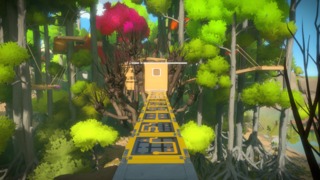
While I didn’t love all of the puzzles in The Witness, I really respected the game’s commitment to teaching new mechanics without drastically changing the nature of the puzzles. Every puzzle in the game is a line puzzle, but that simple conceit somehow stayed fresh over the dozen-plus hours I played the game. Couple that with the game’s outstanding art design and its philosophical ruminations (I love me some navel-gazing philosophical discussion) and I was hooked. The Witness lost me a few times with some of its more difficult puzzles, but once I found out the secret of the monoliths I just couldn’t be mad at the game anymore. The Witness was the rare type of game that changed the way I look at the natural world, and that was enough for me.
4. Thumper
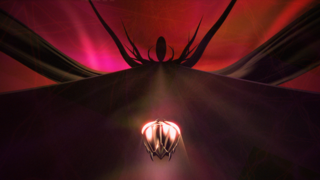
I really thought I was done with rhythm games. I will still occasionally crack open Audiosurf every once in a while, but I otherwise haven’t touched a rhythm game in years. Who’d have thought all I needed was a game that cared as much about survival horror as it cares about rhythm? Thumper had me intrigued from the start, and although I couldn’t play the game for more than an hour at a time, I really enjoyed those hours. The game’s visuals are a delightful blend of organic, geometric, and inorganic shapes that manage to evoke familiar forms while still being unsettling. While I finished the game a little more strung out than when I started, and with a fresh bruise on my thumb, I walked away happy.
3. Inside
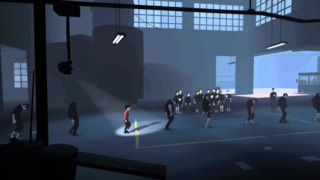
As I played Inside I was constantly impressed by how much Playdead was able to communicate about the world and story of the game through nothing more than animations and designs. Nothing talks in Inside, but the gameplay manages to say a lot. The fragile jumps and sickening thuds of the main character communicates just how precarious and overwhelmed he is in the violent dystopia that surrounds him. The drunken, legato motions of many NPCs communicate docility while their powerful bodies are also shown to be capable of tremendous feats of strength. There’s also a segment where NPCs walk in a queue, but their steps are so precise and mechanical that they become both fascinating and deeply unsettling. This game is a masterclass in setting and marrying mechanics with story. I strongly recommend it, and its ending is something you just have to experience.
2. Magic the Gathering: Kaladesh
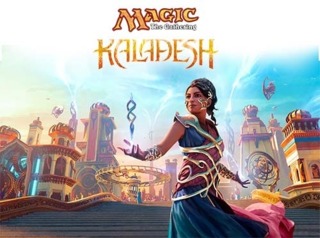
I don’t know if this is cheating, but I really don’t care. I spent most of my gaming time playing MTG this year, and Kaladesh is proving to be one of my favorite sets in the 10 plus years I’ve played Magic. Kaladesh is an entire plane that appeals to the sensibilities that got me into Magic in the first place. The plane is full of visually distinct art, this time with an Indian-inspired theme and a World’s Fair invention premise. It also introduced a new race of creatures called Aetherborn, which are basically Black Mages from FFIX. They are short-lived, magical beings that are struggling to squeeze the fullness of life into their tiny timeframe.
Kaladesh also has a huge focus on invention. It introduced a number of powerful cards that beg for synergistic decks to be built around them without being so degenerate as to be oppressive. For example, there are four incredibly powerful four mana artifacts that each rely entirely on players finding the right shells to put around them (Aetherworks Marvel, Panharmonicon, Ghirapur Orrery, and Aetherflux Reservoir). Though two of them are now at the center of dominant Standard decks, due to the fact that they are all four mana artifacts that do nothing on their own, they are far from unstoppable. Unlike in other combo-driven metagames, the combos in Kaladesh are as fragile as the filigree that adorns so many of its magical machines. However, when those machines start humming, they are beautiful and hard to stop.
I’ve been building around these pieces for months now and I still haven’t exhausted the deck ideas that I’d like to try. That’s pretty rare for me this far into a Standard season, and I think that speaks well of Kaladesh’s design. I also really enjoy that I was able to make a giant flying spaghetti monster pilot a helicopter. There are some joys you just can’t put a price on.
1. Final Fantasy IX (PC)
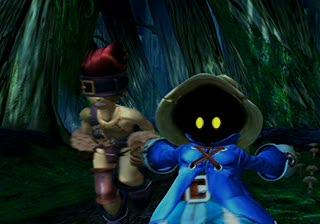
How could my number one be anything else? Your favorite game doesn’t get remastered and rereleased every year (though Square is certainly trying). I don’t even feel bad about making FFIX my game of the year because the PC version is head and shoulders above the PS1 version on several different levels. The updated graphics and uncompressed FMV allow the PC version to visually stand above its source material. The new usability features that were added to the PC version, such as fast-forward mode and no-encounter mode, are a huge boon to anyone trying to replay FFIX or who want to see the story without diving deep into the gameplay. The only major omission from the PC version is the game’s multiplayer feature. Yes, FFIX had a multiplayer control feature on the PS1. You could split your party’s control between controller one and controller two, which allowed for more fun couch co-op. I understand that co-op is not necessarily what people come to FFIX for and that the PC and mobile environments aren’t really known for couch co-op, but that feature is one that I genuinely miss.
On a more serious note, FFIX helped me power through a lot of difficult times this year. The day my grandfather passed I played the whole game in about 6 hours using a combination of the game’s fast-forward feature and some speedrun tactics I’ve learned. I really needed to be alone with my thoughts that day and FFIX is the game I played to remind me that even when times seem bleak, there is no reason to succumb to cynicism. Time is too short and life is too beautiful for that. I’ll echo a sentiment that my friend and fellow GB mod @zombiepie said on our last FFIX podcast: FFIX is the most earnest and hopeful game I’ve ever played, and I really needed that this year. Final Fantasy IX is my game of 2016.
